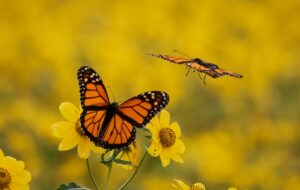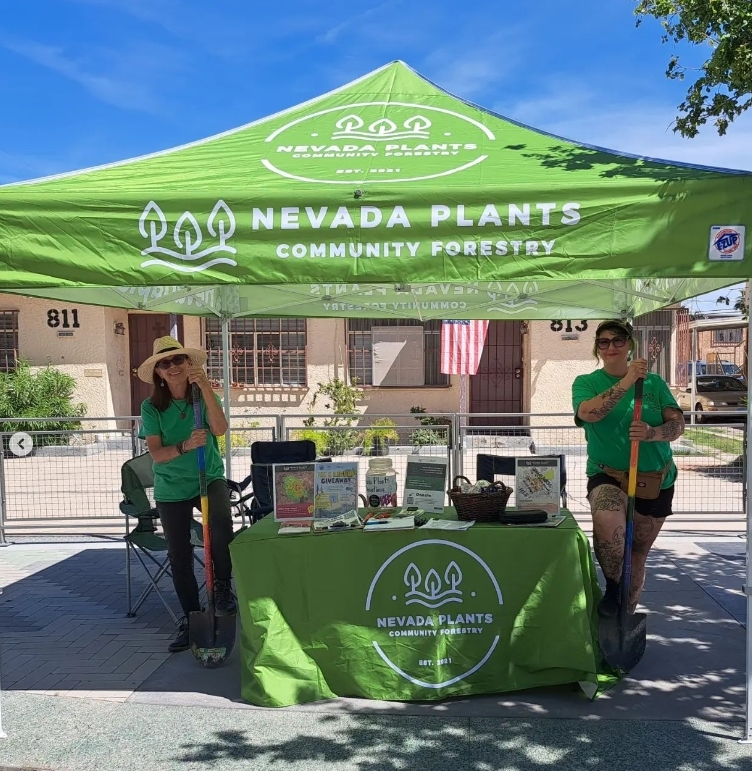
Nevada Plants – Tackling Tough Times With Trees
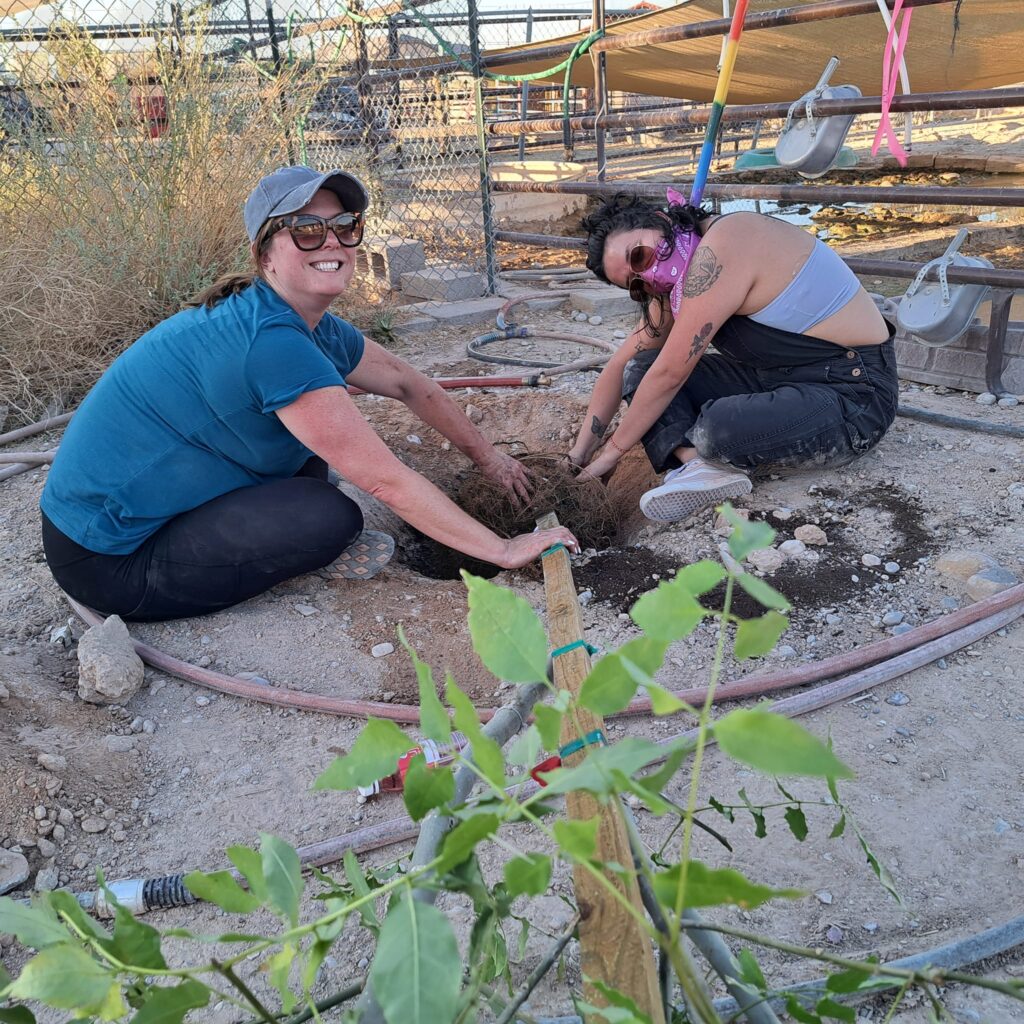
Addressing issues related to the climate crisis and food insecurity, Nevada Plants is planting trees all over Nevada to reduce urban heat islands and food deserts.
Founded in late 2021 by Lisa Ortega, the Executive Director and former president of NVP, the organization’s mission is to plant trees and provide tree education to Nevada communities.
Finding the best trees to plant in the best places, Nevada Plants strategically works to make Nevada more green and sustainable.
How The Program Works
With a primary focus on planting trees, many factors go into determining where to plant and the best trees to grow.
Where to Plant
Ortega shared that the organization uses several parameters to determine where to plant trees.
“We use urban heat island maps and food desert maps,” she explained. “And we’ll plant at any kind of facility for the betterment of the community. It doesn’t matter where it is; it’s important to plant there too.”
What to Plant
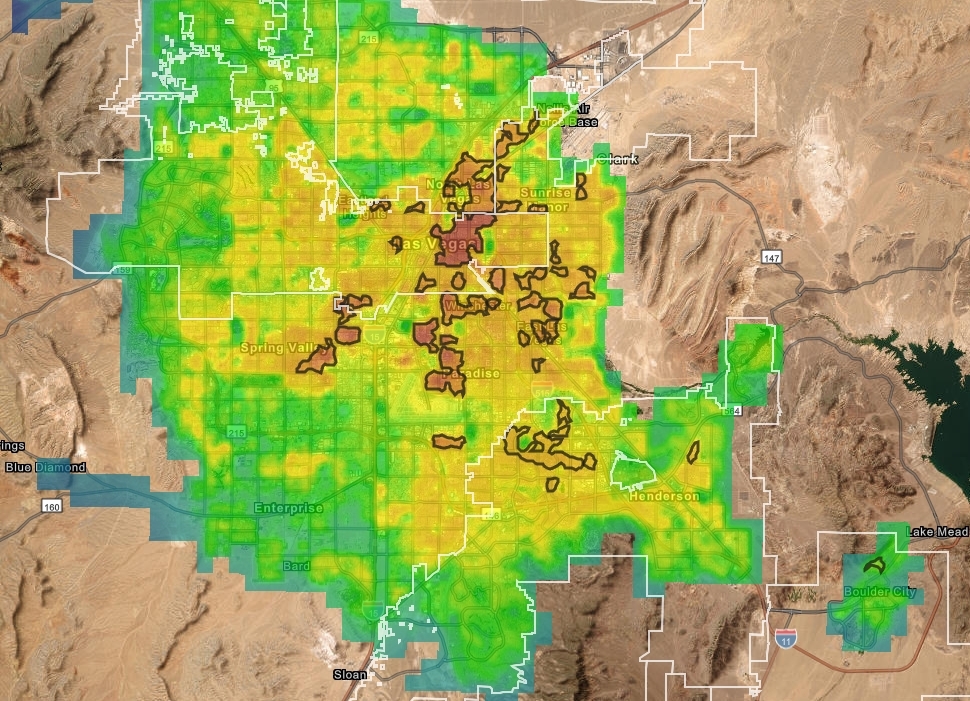
When deciding the types of trees, Nevada Plants employs diversity based on where specific trees are most needed.
“We try to plant fruit trees in food deserts. In urban heat islands, we plant large, drought-tolerant shade trees. Native trees are great, but we must be diverse,” Ortega said. “We have to be mindful of things like water usage and look ahead to anticipate the next bug that might cause harm to trees. So, the more diversity, the better. Especially with our climate changing and science learning new things constantly, we’re on the edge of what will work and not work.”
Using data from the USDA and the Southern Nevada Extreme Heat Vulnerability Webmap, Nevada Plants can pinpoint the most ideal places to plant fruit trees and shade trees. Depicted to the left is a map visualizing the urban heat island effect in Las Vegas and its distribution of severity and vulnerability.
Red, orange, and yellow areas indicate severe, moderate, or mild levels of heat, impact, and/or exposed land. Green and blue areas indicate relatively less heat, less impact, and/or more vegetated land cover. The image depicted factors in a combined score of factors consisting of levels of Exposure, Sensitivity, and Adaptive Capacity. to create an overall score of Extreme Heat Vulnerability. For example, older people, people of color living, people living in more impoverished areas, and unsheltered homeless people are all more vulnerable to extreme heat, especially if they have a disability or medical condition and have no access to A/C.
How to Qualify For a Free Tree Planting
For people wanting a free tree, there are a couple of ways to acquire one from Nevada Plants.
The primary way is by applying for a tree on the Nevada Plants website. If you live in a food desert, urban heat island, low tree equity zone, or close to roadways, you qualify for a free tree. Just fill out the form, and someone will contact you about planting.
If you don’t qualify, another way to receive a tree is to attend an NVP giveaway event. The organization is also currently partnered with the City of Las Vegas and One Tree Planted to offer specific zip codes a $20 tree deal. If you live in Las Vegas City zip codes 89110, 89101, or 89104, you can get a tree and an automatic irrigation system set up in your front yard for just $20.
“If we are planting, we will call 811,” Ortega added. “But if you get a tree from one of our giveaways, we encourage people to call 811 before they start digging. You don’t want to hit a utility line accidentally.”
She also advised not to plant trees too deep if you’re planting your own.
“Most of the time, one of the main reasons they die is due to incorrect planting,” she said. “Dig into the pot until you can feel the flare or first root. That should be right at the surface. Planting too deep kills trees.”
How Trees Address Food Insecurity, Climate Change, and Mental Health
People might be surprised to learn how essential trees are to addressing issues like food deserts and heat islands or helping people feel less stressed or depressed.
“More fruit trees in your neighborhood means there’s more food available to share with the community,” Ortega said. “And by providing shade, trees help reduce the heat of the surrounding street or area. If you have a west or south-facing window, trees nearby can also help lower building temperatures and thus lowers energy consumption.”
Not only that, but planting trees is great for both mental and physical health. Being in the fresh air and sunshine, moving around, and getting your hands in the dirt, helps produce endorphins. In turn, this helps reduce stress, improve mental outlook, and can even help with pain relief.
“Planting trees makes people feel good,” Ortega said.
(Article continues after the ad)
Please follow our fantastic site sponsors! They make content like this possible! 🙂
Inspiration for Nevada Plants
Lisa Ortega’s Background
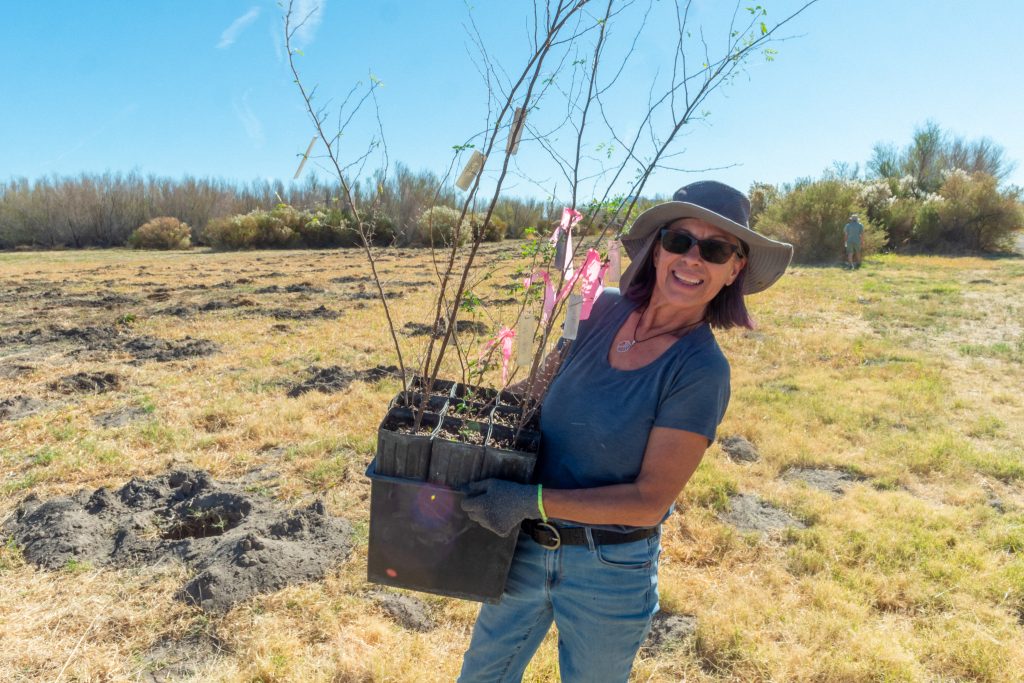
With a background in ornamental horticulture and working with the Division of Forestry, environmental work came naturally to Ortega. And from a young age, she always wanted a job where she’d be around plants and nature.
“My dad used to do a lot of outdoors stuff, so I loved the outdoors and knew I wanted to grow plants or do photography,” she said. “Remembering that smell from inside a greenhouse, I knew I wanted to be somewhere in that nurturing smell of the soil.”
With that in mind, Ortega went to college and acquired an associate degree in ornamental horticulture and later an internship with the Division of Forestry.
“You had to be a certified arborist for the job, so I took some classes to get that certification,” she said. “With that program, I was an urban forester. My job involved contacting places like libraries and schools to offer free tree plantings through a state-run program on public properties.” After school, Ortega stayed with the Division of Forestry for a while.
NV Shade Tree Council
While in her junior year, she also worked with the Nevada Shade Tree Council after asking how she could volunteer to plant trees. After receiving an invitation to one of their meetings, Ortega served on the council for 16 years.
“I ended up getting booted out due to differences of opinion about how people had to pay to get arborist certification and then have to pay to keep the certification,” she said. “It’s challenging to become a master arborist; out of the four masters in the state, I am the only woman.”
With numerous obstacles to becoming a certified arborist, let alone a master in the state, including the cost of certification, Ortega says we need to make the process more accessible.
“You must have a certain number of years in the industry, such as working at a tree-centric organization, a nursery, or the forestry service. And it takes at least three years to become a master,” she explained. She also shared that there are presently no Spanish-language arborist workshops in Nevada, so the pool of potential masters is even smaller.
“It’s my goal to help at least 20 other people become master arborists so the field isn’t as small or specialized,” she said.
Developing Nevada Plants
After being kicked from the council, Ortega began considering her next step. Since the NSTC had stopped its tree planting program, Ortega desired to continue that work and expand on it.
“I loved the tree plantings we used to do. I’d go around and see the trees I’d helped planting,” she said. “So I decided I wanted to keep doing that, and I wanted to do tree training, events, and education workshops. Most people aren’t able to go out of state for conferences and training for tree planting or safety protocols.”
Creating her own organization, Ortega launched Nevada Plants Community Forestry in October 2021 as a supportive non-profit, assisting other organizations with tree-related projects and goals.
“We’re tree support,” she said. “The other organizations put on the event, and we provide the trees, support, and assistance. We also map out and GPS record of the trees we plant.”
Nevada Plants also wants to develop an association of different communities in the state to address things on a unified front.
“The goal is to have one voting member from every county on our board to represent these communities. They know their community and its needs, their community members, the shakers and movers, and the power structure. We want to support them through flyers, funding, and help with projects,” Ortega explained. “Getting 27 people together for a vote is tough, but people show up.”
She added that the organization not only works with county governments but also with recovery centers, halfway houses, and places all about community, mental health, vitality, healing, worship, and so on.
Nevada Plants’ Current Goals and Obstacles
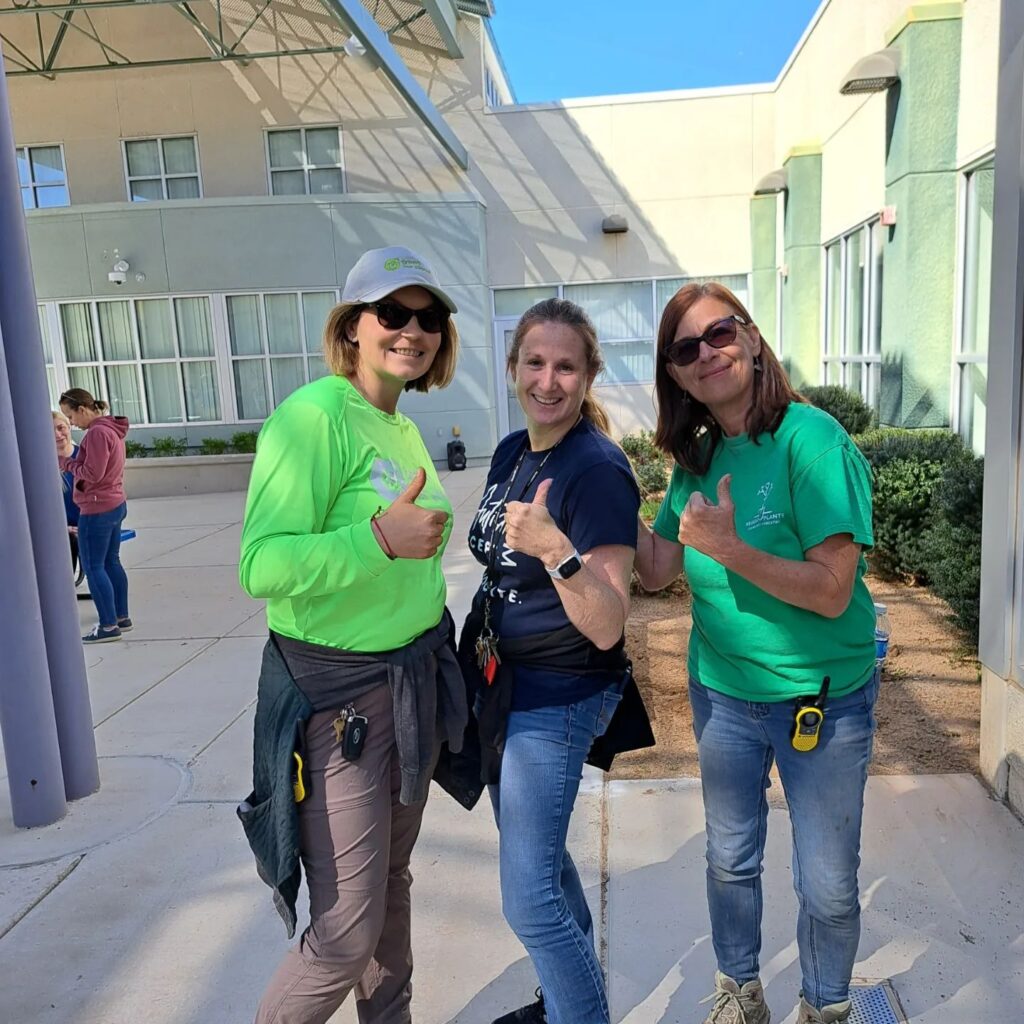
At the time of this interview, Ortega shared that the organization had planted 462 trees, and her goal was to finish the planting season strong. With the planting season just ending, the organization has helped plant about 200 trees this year alone, bringing the all-time total to 619.
“We did 22 events last year,” she said. “This year, we’ll probably end up doing less, but it’s hard to say because many counties want to plant. We have more active board members now, so more people are working and planting all over the state.”
Ortega also shared that she wanted to increase the number of connections in the community and have more people out there planting trees.
“We don’t have a huge following of tree planters yet,” she said. “Our database is mostly people who have received trees.”
One major challenge for the organization has been fundraising. Working primarily through grants, NVP is limited in what they can spend money on.
“It’s not that [the grants] aren’t plenty, but they’re specifically designated funds, so no extra expenditures like t-shirts, snacks, insurance, or networking costs,” Ortega explained. “That’s why we accept donations to help fund other aspects of our work.”
Nevada Plants Events
Ortega said the organization is super busy during the growing season, with tree-planting events almost every weekend. Now that summer has arrived, the growing season has ended, and NVP uses this time to address other areas of the state.
“When we’re not in the growing season, it’s good to have things to do; we want to stay busy and connected,” she said. “So when it’s too hot, we move up to northern Nevada, like in Elko or Lincoln County. We also occasionally host training and workshops and attend park cleanups.”
Follow Nevada Plants to learn about upcoming events and opportunities!
A Community With Strong Roots
To accomplish its mission while building strong community connections, Nevada Plants partners with many organizations and entities throughout the state. This includes local governments like the City of Las Vegas, Clark County, Washoe County, and the City of Elko and Ely.
NVP also works with community groups like Battle Born Progress, Faith in Action, The Solidarity Fridge, Fifth Sun Project, Nevada Conservation League, Sierra Club, the NV Disabilities Coalition, and PLAN. And NVP recently paired with One Tree Planted, an organization that plants tree saplings for $1 each in areas worldwide to help reforestation efforts.
Nevada Plants also helped raise awareness about Assembly Bill 131 in the recent Nevada legislative session. Focusing on developing an urban community forestry program to expand green spaces in underserved areas, Governor Lombardo approved AB 131 on May 30th.
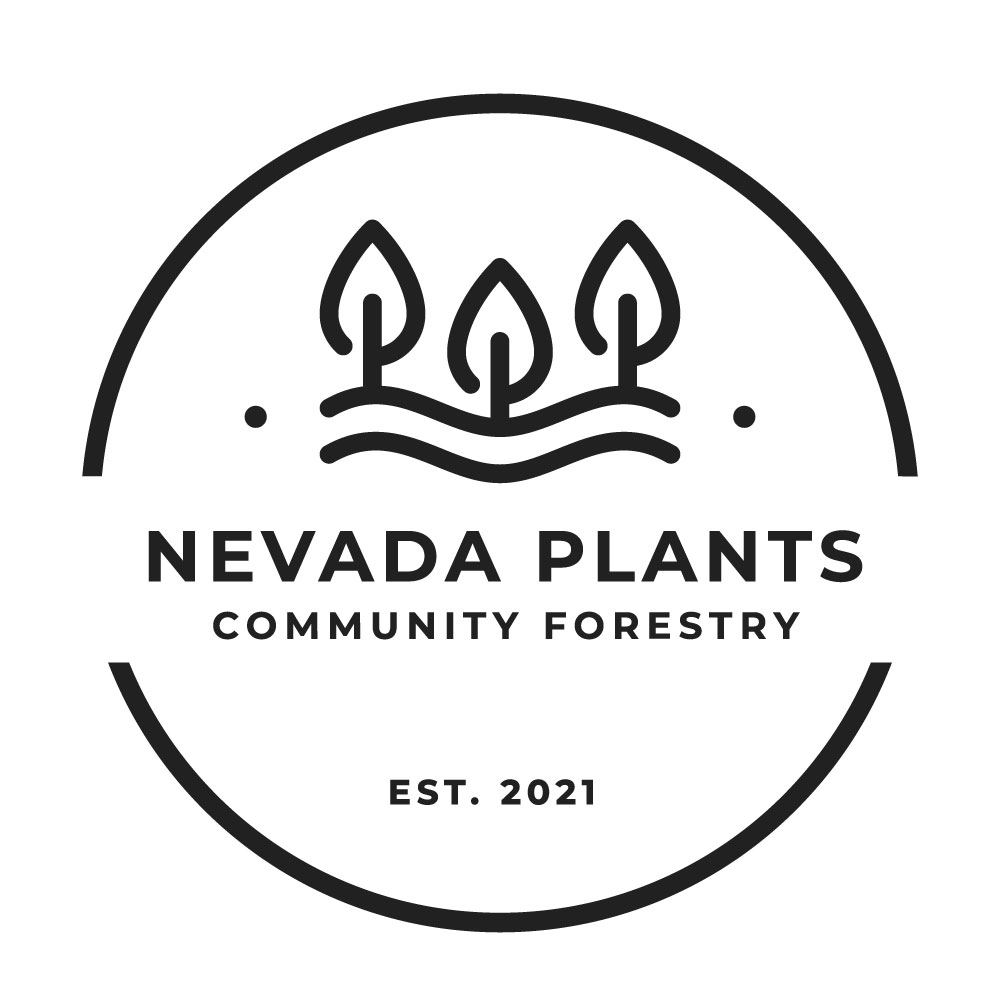
#GetinMotion With Nevada Plants
Ortega said there are several ways to help NVP and its mission.
“Come help us plant trees, or plant a tree yourself,” she said. “And, of course, please follow us and donate to the organization.”
To follow Nevada Plants, visit its Facebook, Instagram, or Twitter, and subscribe to its YouTube channel.
Donate to the organization here, and buy some NVP swag in their online store. And, to volunteer with NVP, sign up here.
Thank you to our Patreon ‘Cultivator’ supporters and our sponsors who help make content like this possible!
The following Patron(s) supported the production of this article:
Crystal Gropp
The following sponsors supported the production of this article:
Viva La Compost & LunaKai Lash

